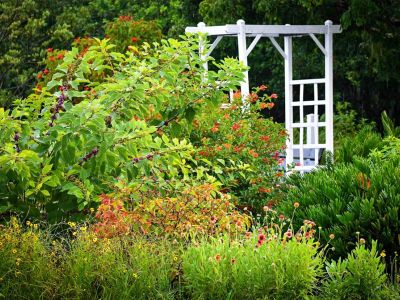Un-gardening is a new fad that is being embraced by environmentally conscious gardeners. Such an approach to gardening enhances biodiversity and encourages wildlife and native flora. It is also a way to reduce the use of fossil fuels, synthetic fertilizers, and excess water. Allowing the land to revert to its natural state may appear to some to endorse an untidy garden, but in reality, use of native plants can be planned, layered, and purposeful.
What is Re-wilding?
Re-wilding is more than just letting the land go fallow and unkempt. It is a process of encouraging wild plants and fauna, putting into place systems to keep management low, and maximize natural resources. The practice is based on the mantra, “nature knows best,” where the aim is to restore what humans have torn up. Reintegrating the natural biological systems restores balance and health to the ecosystem. Human intervention is responsible for most of the land degradation and loss of habitat. With re-wilding, that balance can be recovered. Also called un-gardening, the process unravels previously thought garden norms. Installing native plants is part of the practice but it also involves using land management practices and restoration techniques to return the land to its original state.
How to Re-wild Your Garden
The initial steps are envisioning the project and researching native plants. Walk the neighborhood and consider areas that are not developed for an eye on what the area should look like, and what grows naturally. Any non-native species need to be identified and removed in severe un-wilding plans, especially any that are considered invasive. Your local extension offices can help identify any problem species. Next, imagine a system that is integrated, considering everything from pest control to irrigation. Choose organic methods of control and encourage native bees and other pollinating insects. Provide habitat, food, and water for wild animals and birds. Use water wisely, placing drip systems that directly water plant roots, and opting for low moisture species that will thrive with little moisture. If possible, plant a green roof that will capture rainwater while helping insulate the building.
Developing a Native Plant Garden
Re-wilding your garden is a multi-faceted project and will take years to have it fully developed. One of the early parts of the plan is installing native plants. Many of our indigenous plants are prolific producers of both animal and bird food, but also nectar for pollinators. Plan a prairie wildflower garden if that is what the habitat is in your region. For gardeners near forests, select native trees and plant understory plants for cover and food. Coastal gardeners will have dune plants and grasses from which to select. Those in arid, hot areas can take a page from Mother Nature’s book and use succulents and other waterwise flora. Consider installing a natural pond that will feature aquatic plants that filter the water. Such a structure will provide water for wild fauna and enhance the landscape with sound and humidity. As you make your selections, always provide a haven for the local animals and insects who will help the system flourish and give you enjoyment through the years.
